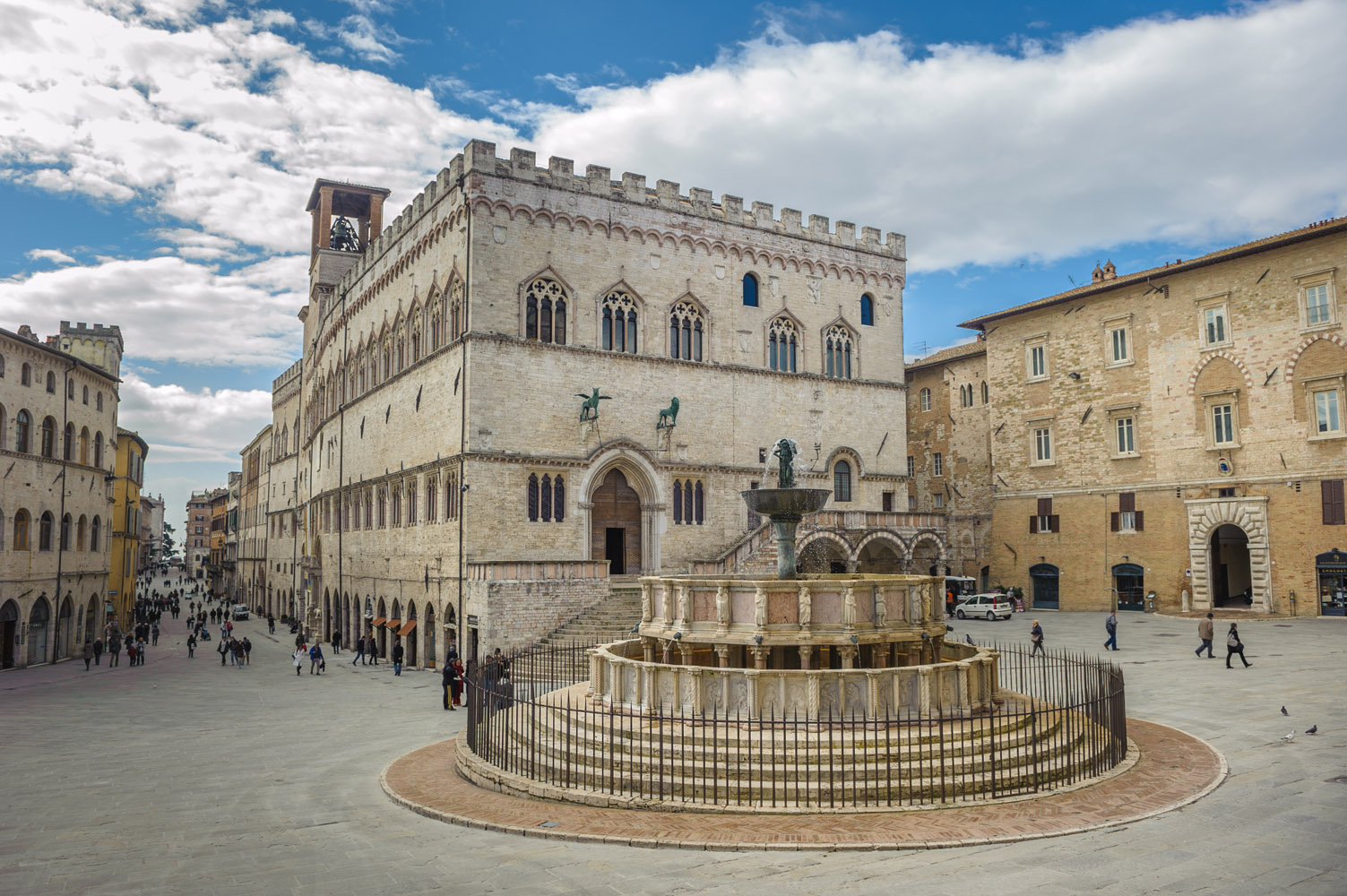Perugia, the Umbrian capital, is a city waiting to be discovered in the magnificence of its streets, squares and fountains and in its winding streets that intersect well beyond the main street named after Pietro Vannucci known as Perugino. At the two ends of this street are the two highest points of the city: Colle Sole from which you can enjoy a breathtaking view of the perimeter walls which extend for about 9 km, in some points overlapping the Etruscan ones, and Colle Landone occupied today from the Carducci gardens with a view of the medieval neighborhoods below and views to admire at sunset. The significant difference in height between the hill (493m) and the plain is overcome by engineering works with pedestrian paths with escalators and lifts, set in a highly evocative historical environment.
Founded by the Umbrians it became in the 6th century BC. one of the cities of the Etruscan dodecapolis, the last to be defeated by the Romans by Augustus’ troops. The signature of this victory, Augusta Perusia, is still visible on the top of the Etruscan Arch, recently restored and magnificently preserved.
Piazza IV Novembre, among the most beautiful in Italy, is the jewel overlooked by the original medieval monuments such as the Fontana Maggiore, the Palazzo dei Priori containing the Sala dei Notari, the Cathedral of San Lorenzo, the Loggia di Braccio. But the large square, as it was called in the past, also hides other treasures not visible on the surface. From the Cathedral Chapter Museum we descend to Underground Perugia which, through sinuous walkways, travels through the centuries and tells us about the Romans, Etruscans, Byzantines and the late ancient and medieval eras. Other evocative underground places are the Rocca Paolina, commissioned by Paul II Farnese in the mid-16th century to definitively incorporate Perugia into the orbit of the Papal State, and the Etruscan Well.
It is very difficult to select all the points worthy of being visited in the ancient acropolis of the city, but the National Gallery of Umbria, the Collegio della Mercanzia, or the Collegio del Cambio with frescoes by Perugino cannot be missed. Small shops of the highest quality craftsmanship allow tourists to space out moments of walking by being able to choose between the typical torte al testo garnished with products from the Umbrian land, the wood-fired porchetta, the daily fresh cream or the chocolate prepared by excellent pastry chef schools who have embraced the glorious local history, told today at the Perugina museum, a true journey into taste. Branching out the routes into the villages, there is a very rich choice of monumental churches such as that of San Domenico with one of the largest Gothic windows in Italy dating back to the 14th century; San Pietro, the first seat of the Benedictines in the city with its three cloisters, the Medieval Garden of medicinal herbs and the valuable paintings distributed throughout the rooms of the structure; the oratory of San Bernardino whose pink stone façade, finely decorated with azurite and malachite, houses the polychrome Renaissance portal by Agostino di Duccio. Adjacent to it is the church of San Francesco al Prato, the second building in the world dedicated to the saint, today, after many restorations, home to the Music Auditorium and multipurpose room for events. In fact, even current Perugia, faithful to its cosmopolitan nature, offers a series of cultural initiatives with an international scope that periodically put it at the center of the scene: Umbria Jazz (July), the Umbrian Music Festival (September), Eurochocolate (October) , the Journalism Festival (April) and many others.

